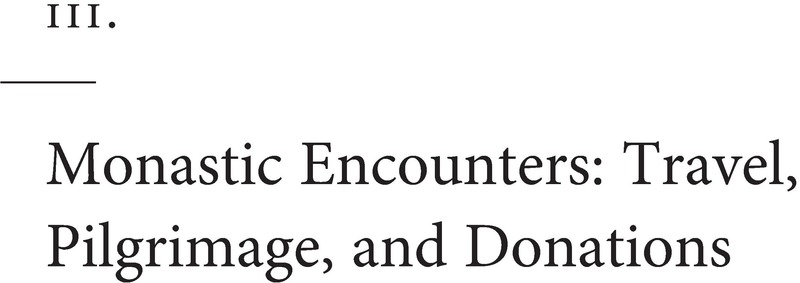Book contents
- Monastic Economies in Late Antique Egypt and Palestine
- Monastic Economies in Late Antique Egypt and Palestine
- Copyright page
- Contents
- Figures
- Tables
- Contributors
- Preface
- 1 The Monastic Economies in Late Antique Egypt and Palestine: Past, Present, and Future
- I. The Monastic Estate
- II. Production and Consumption of Food and Material Goods
- III. Monastic Encounters: Travel, Pilgrimage, and Donations
- Glossary
- Index
- References
III. - Monastic Encounters: Travel, Pilgrimage, and Donations
Published online by Cambridge University Press: 14 April 2023
- Monastic Economies in Late Antique Egypt and Palestine
- Monastic Economies in Late Antique Egypt and Palestine
- Copyright page
- Contents
- Figures
- Tables
- Contributors
- Preface
- 1 The Monastic Economies in Late Antique Egypt and Palestine: Past, Present, and Future
- I. The Monastic Estate
- II. Production and Consumption of Food and Material Goods
- III. Monastic Encounters: Travel, Pilgrimage, and Donations
- Glossary
- Index
- References
Summary

- Type
- Chapter
- Information
- Monastic Economies in Late Antique Egypt and Palestine , pp. 269 - 386Publisher: Cambridge University PressPrint publication year: 2023



